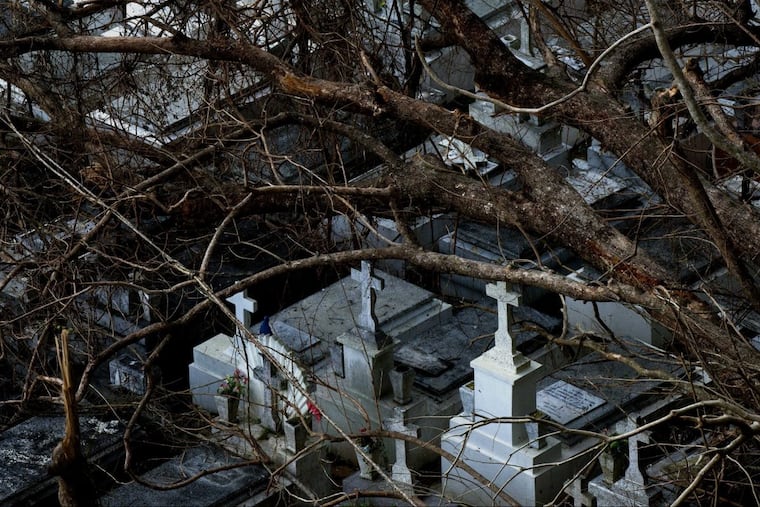Storm claims could top $100B; for Puerto Rico, 'Maria changes everything'
A feared storm loss claims - many times the usual hurricane season - "focuses the mind."

Far from the wreckage of the Caribbean and the Gulf, the misery of 3.4 million people in powerless Puerto Rico and more in the storm-blasted islands to its east, the damage-counters are estimating that claims from this summer's hurricanes could top $100 billion — many times the usual season losses, a figure that "focuses the mind," stock analyst Larry Greenberg writes in a report to clients of Philadelphia-based Janney Montgomery Scott.
Insured losses from Harvey, which flooded Houston and stopped its oil and plastics plants, are estimated at $17 billion, down a bit from earlier projections, as Allstate and Progressive report fewer flooded-car claims than feared. It also helps insurers, but not Texans, that many of the Houston residents whose homes were ruined by water that wasn't supposed to reach so high weren't insured.
Irma, which socked Florida and the Caribbean, is expected to cost $30 billion, Greenberg notes. Maria, which smashed Puerto Rico and the neighboring U.S., French, Dutch, British and independent islands a second time, could go as high as $85 billion. Big insurers such as AIG and Chubb will take big hits. Reinsurers should spread much of the loss among international insurers and investors, but the bottom line is that everyone's property-insurance premiums, which have been "soft" the last few years, are likely to rise.
Puerto Rico's population, already down more than 10 percent in the last decade, faces deeper declines. Islanders left destitute by Maria and the weak local factory, tourist and farm economy will likely evacuate to Florida, New York and other states, sending the Puerto Rico census count below three million for the first time since the 1970s, writes Matt Fabian, who has followed the island's previous fiscal and government challenges as publisher of the Municipal Market Analytics daily letter.
"Maria changes everything," Fabian writes. "The combination of tens of thousands of destroyed homes, 94-degree heat and humidity, persistent rain, an exploding post-flood mosquito population, no water or air conditioning, closed hospitals, wrecked bridges, mud slides" will kill more than the dozen dead from the storm if U.S. and local authorities don't quickly reopen hospitals and get water, phones and power back.
The PRASA water utility supplies about a quarter of Puerto Rico's people from towers that pipe downhill to homes and businesses. But the rest of Puerto Rico depends on electric pumps, Fabian notes. Factories have shut down, waiting for workers' family situations to stabilize.
Puerto Rico's major Aguirre power station wasn't flooded; others were, and with power lines down even those that can be restarted won't be powering homes or businesses until lines are replaced and diesel fuel shipped in. FEMA, U.S. Department of Energy, and New York state power crews have rushed to help. The wreckage will likely speed a sale to private owners of the island's PREPA public power utility.
In his initial social-media comments, President Trump noted the Puerto Rico government's effective bankruptcy. But storm wreckage has made it tougher for creditors to squeeze the government, Fabian notes: The damage "is massive enough to set aside creditor/debtor considerations for months" or longer. The PROMESA fiscal-oversight board already has diverted an initial $1 billion from creditor payments to recovery.
Investors — including opportunistic hedge funds who bought a lot of the $100 billion in outstanding Puerto Rico-backed debt at a discount from plain-vanilla retirement and mutual funds as the island's credit collapsed in recent years — should expect "zero payments to most [Puerto Rico] bondholders for the foreseeable future," Fabian adds. Courts "will reasonably show little empathy for mainland financial creditors" compared with local governments and others with pressing needs after Maria.
Puerto Rico's hurt is worse because, as the largest U.S. territory, it has been the target of previous grand development plans that proved unsustainable. It is now attracting proposals for public asset sales to private operators, solar-power systems perhaps more suitable for a Caribbean island than its old imported-fossil-fuel plants, and other big schemes. The island needs infrastructure its people can support, so it can more easily stand on its own, a home for Puerto Ricans who want to rebuild.